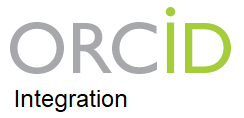Complicaciones De Preeclampsia: Actualización
Autores/as
DOI:
https://doi.org/10.37980/im.journal.revcog.20221925Palabras clave:
eclampsia, edema pulmonar, injuria renal aguda, Síndrome HELLP, ruptura hepática, restricción del crecimiento intrauterinoResumen
En esta actualización se definen las complicaciones de pre-eclampsia empezando por los cambios en la definición que incluyen 6 órganos blanco incluyendo el edema pulmonar y el compromiso utero-placentario.
En eclampsia se precisa su fisiopatología como perdida de autorregulación del flujo sanguíneo cerebral, edema y posible hemorragia, se presentan los esquemas de sulfato de magnesio y se define su no probada necesidad en el postparto.
En edema pulmonar se contemplan las 3 causas como presión incrementada, sobre-hidratación y daño endotelial precisando en el manejo a veces los diuréticos y a veces la intubación.
En ruptura hepática, se precisa su etiología que inicia con daño endotelial extravasación de glóbulos rojos, trombosis, hemorragia, formación de hematoma y su ruptura. Se precisa los segmentos del lóbulo derecho como los mayormente comprometidos, la precisión del grado de daño hepático con dos clasificaciones y sus múltiples manejos basados en el empaquetamiento hepático.
En síndrome HELLP, se precisa su etiología como la suma del compromiso hepático y hematológico, la necesidad de precisar los grados de severidad y se muestra que su presencia más de origen temprano agrava las demás complicaciones. Se menciona los beneficios de la dexametasona en su manejo.
En Injuria renal aguda se muestra en la etiología no sólo la glomeruloendoteliosis si no la podocituria y la trombosis microangiopática, se precisa la presencia de hematuria como signo de alarma, los criterios de los estadios AKI 1, 2 y 3 de la última clasificación y su manejo con terapia de reemplazo y hemodiálisis.
Por último, en el compromiso útero placentario, se precisan las últimas definiciones de RCIU que es un dato de severidad de pre-eclampsia y que tomar en cuenta el criterio previene la mortalidad perinatal significativamente que cuando no se considera como criterio.
Archivos adicionales
Publicado
Número
Sección
Licencia
Derechos de autor 2022 Infomedic Intl.Derechos autoriales y de reproducibilidad. La Revista RevCog es un ente académico, sin fines de lucro, que forma parte de la Sociedad Centroamericana de Ginecología y Obstetricia. Sus publicaciones son de tipo ACCESO GRATUITO y PERMANENTE de su contenido para uso individual y académico, sin restricción. Los derechos autoriales de cada artículo son retenidos por sus autores. Al Publicar en la Revista, el autor otorga Licencia permanente, exclusiva, e irrevocable a la Sociedad para la edición del manuscrito, y otorga a la empresa editorial, Infomedic International Licencia de uso de distribución, indexación y comercial exclusiva, permanente e irrevocable de su contenido y para la generación de productos y servicios derivados del mismo.








